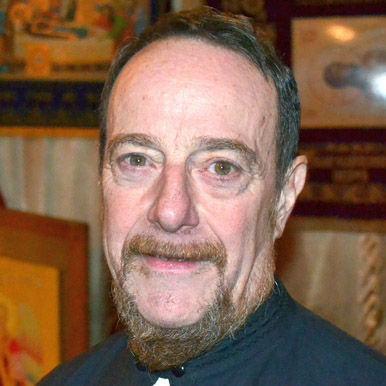Today is the feast of the Great Martyr St. George the second patron of England (more of that soon). Albeit dearly beloved by the English, we know precious little about him. That first historian of the Church after St. Luke, Eusebius of Caesarea, tells us in 322 AD that St. George was a soldier of noble birth, put to death by Diocletian at Nicomedia on 23 April, 303. However there are few details in his account and although understood to be St. George, Eusebius does not give us his name.
This martyr saint was a tribune in the Roman army and beheaded by that great persecutor of the Christian Church, Emperor Diocletian. His crime? St. George was protesting against the persecution of his fellow believers. The medieval romance of St. George on a white steed slaying the dragon is of course fictional. However, it is a true icon of the Christian defeat of human sacrifice, and enduring demonic expression of idolatry and fear throughout the ages. Doubtless for this reason Muslims also have a great affection for St. George in the Middle East, although the deeper reasons are perhaps more obscure. Nonetheless, it is not uncommon in Lebanon and Syria to find Muslims worshipping with Christians in our churches to this day.
But what about the medieval English? You will recall that at the beginning of this sermon I said that St. George was our second patron saint. I have also entitled this sermon, “When the Dragon Slew St. George.” How so?
The first patron saint of England was in fact another but local 9th century martyr, St. Edmund after whom his own city is named, Bury St. Edmunds. St. Edmund defended his East Anglian realm against the heathen Danes who captured and tortured him with the intention of getting him to deny Christ. He stoutly refused and was both impaled by arrows and beheaded. In 902 AD his relics were translated to the city that now bears his name. Before long he became the patron saint of England, complementing St. Peter and St. Paul for whom the English had also had long great affection. But, after the Norman invasion everything began to change and our great western Orthodox inheritance began to be eclipsed by a new feudal order. Even such great and good saints as St. George began to suffer loss, eventually slain by the dragon of romanticised political power. Here is how … as Fr. Andrew Phillips has written:-
“In 1199 the French King of England, Richard I, was to call at the tomb of St. George in Lydda, while on the Third Crusade. Invoking the saint, he won a great victory and consequently placed himself and his army under St. George’s protection. St. Edmund, however, remained the national patron. Thus in 1214 the future Magna Carta barons, in opposing Richard’s younger brother, King John, rode to Bury St. Edmunds on St Edmund’s day to make a pledge at the altar of St. Edmund to strengthen the national cause. In 1215 the Magna Carta was signed by King John in the water meadows of Runnymede. As a result of this historic event the motto of Bury St Edmunds remains to this day: ‘Shrine of a King, Cradle of the Law’.”
In this extract and indeed the whole article Fr. Andrew shows how St. Edmund was first supplanted by St. George by the Crusaders and then how St. George was himself rebranded by the bloody and often mad Plantagenets as the mythic hero of their own historical ascendancy. This corruption of St. George by feudal and then the naked power of warring despotic kings continued in Protestant dress under the Tudors and all the way down to the present day. In the language of the medieval romance, St. George may have slain the dragon but a new dragon arose in England to slay St. George.
The final obscenity today has been the hijack of the cross of St. George by far right fascist and racist thugs who dishonour England by their hateful ideologies and practices. Let’s face it. It has been a long time since England has known and appreciated her true Orthodox saints. St. Edmund is virtually now unknown - thanks to Henry VIII who removed him from the Litany, along of course with the politically inconvenient Thomas a Beckett. St. George’s image has now also been defaced. But what to do?
Fr. Andrew Phillips would have us all wipe out the second Millennium as irredeemable in order to return England to some sort of reconstructed copy of her first millennial Orthodox purity, before all those naughty Normans took over. Now, indeed the Normans were naughty, but the English were not vanquished by them and I believe that with St. George still a potent national symbol for the English it would be a completely impotent project to try and restore St. Edmund to his rightful place. What we have to do as Orthodox is to reacquaint the English with the true St. George and not let the far right hijack his patrimony, including the blood red cross of the Saviour on the white background of Pascha.
This then is what we have to do; show the English how St. George represents a more noble English spirit, a Christian spirit, a spirit of fortitude, courage and sacrifice in the name of Christ. In this spirit of sanctity the true St. George and St. Edmund meet as one. This is what made England a Christian country and it is what will make England a Christian country again … when St. George slays the dragon and when the dragon does not slay St. George.

 Archpriest Gregory Hallam
Archpriest Gregory Hallam
 Fr. Emmanuel Kahn
Fr. Emmanuel Kahn